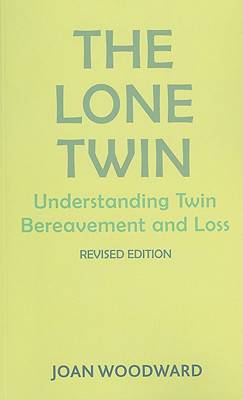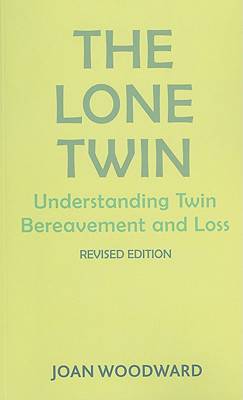
- Afhalen na 1 uur in een winkel met voorraad
- Gratis thuislevering in België vanaf € 30
- Ruim aanbod met 7 miljoen producten
- Afhalen na 1 uur in een winkel met voorraad
- Gratis thuislevering in België vanaf € 30
- Ruim aanbod met 7 miljoen producten
Zoeken
The Lone Twin
Understanding Twin Bereavement and Loss (Revised Edition)
Joan Of Industrial Woodward
Paperback | Engels
€ 30,45
+ 60 punten
Omschrijving
People are fascinated with twins - intrigued by their closeness with each other. But what happens when twins are separated, especially by death? Twin mortality is high, but it is not uncommon for a lone twin's loss, at any age, to go unmarked. They need extra help and support to take them through the loss of their 'other half.' The loss of a twin can be devastating to the survivor. Working as an Attachment therapist, Joan Woodward uses John Bowlby's theories as her conceptual base for her research. In this book, she suggests that the highly significant attachment that twins make with each other may begin, for many, before birth. She explains their closeness and tragic experience of death and bereavement. The Lone Twin includes parental attitudes to the surviving twin, the surviving twin's guilt, the ability to cope, and the effect of loss in childhood and adulthood. Of particular interest are those who lost their twin at birth. Throughout, the book is illustrated by the words of surviv
Specificaties
Betrokkenen
- Auteur(s):
- Uitgeverij:
Inhoud
- Aantal bladzijden:
- 194
- Taal:
- Engels
Eigenschappen
- Productcode (EAN):
- 9781853432002
- Verschijningsdatum:
- 1/12/2009
- Uitvoering:
- Paperback
- Formaat:
- Trade paperback (VS)
- Afmetingen:
- 140 mm x 216 mm
- Gewicht:
- 210 g

Alleen bij Standaard Boekhandel
+ 60 punten op je klantenkaart van Standaard Boekhandel
Beoordelingen
We publiceren alleen reviews die voldoen aan de voorwaarden voor reviews. Bekijk onze voorwaarden voor reviews.











